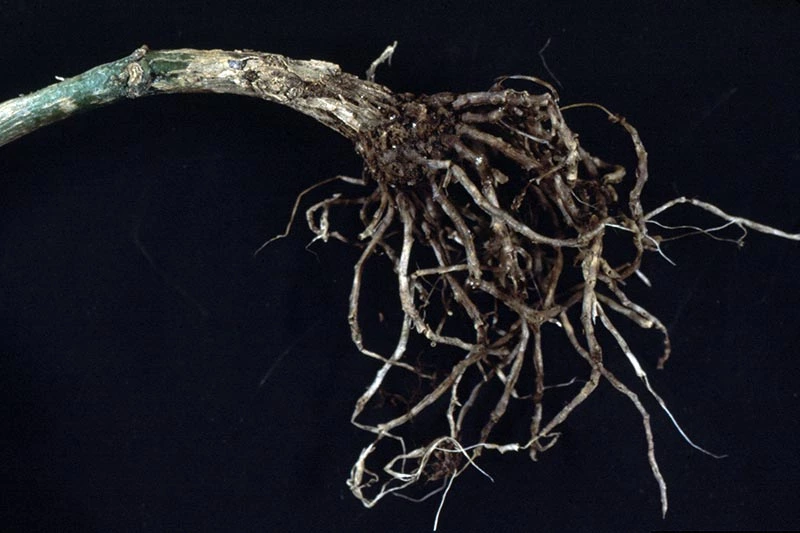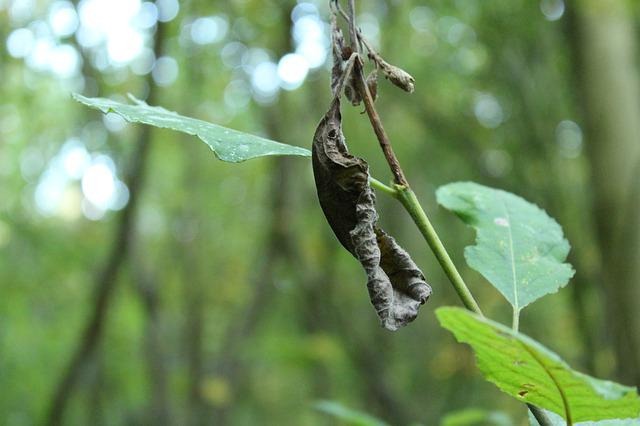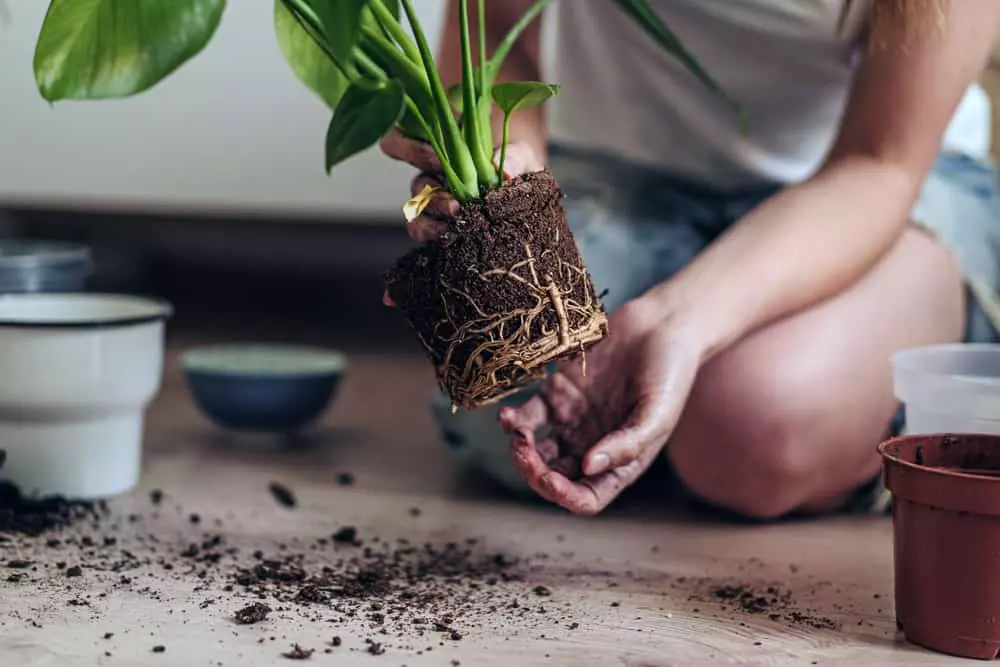This hardy houseplant is known for its ability to thrive in low light and drought-like conditions, making it a popular choice for busy homeowners. In this article, we’ll cover the basics of ZZ plant care, so you can keep your plant healthy and happy.
First, let’s talk about the ZZ plant’s natural habitat. Native to East Africa, this plant is well adapted to dry, arid conditions. As a result, it’s important not to overwater your ZZ plant. In fact, it’s better to let the soil dry out completely between waterings. Overwatering can lead to root rot, which is a common cause of ZZ plant death. We’ll cover more about watering in a later section.
Understanding ZZ Plant
ZZ plant (Zamioculcas zamiifolia) is a popular houseplant that belongs to the Araceae family. It is also known as Raven ZZ plant or Zanzibar gem. This plant is native to Eastern Africa and can be found growing in forests as a tropical perennial succulent.
One of the reasons why ZZ plant is so popular is because it is very easy to care for. It can survive in low light and can go long periods without water. In fact, it is recommended to let the soil dry out completely between waterings to avoid overwatering.
ZZ plant has a unique appearance with glossy, dark green leaves that grow in a feather-like pattern. The leaves are thick and waxy, which helps the plant retain water. The plant can also produce small, white flowers, although they are not very common when grown indoors.
One interesting fact about ZZ plant is that it was thought to be extinct until it was rediscovered in the 1990s. Since then, it has become a popular houseplant all over the world.
Overall, ZZ plant is a great choice for those looking for a low-maintenance, yet attractive plant. Its unique appearance and easy care make it a great addition to any home or office.
Ideal Conditions for ZZ Plant
When it comes to ZZ plants, it’s important to provide them with the right conditions to thrive. Here are some ideal conditions for ZZ plants that we recommend:
Lighting Conditions
ZZ plants can tolerate a wide range of lighting conditions, but they prefer bright, indirect light. They can also thrive in low-light conditions, making them a great option for offices or darker rooms in your home. Direct sunlight can be harmful to ZZ plants, so it’s best to keep them away from windows that receive direct sunlight.
Temperature and Humidity
ZZ plants prefer temperatures between 60-75°F (15-24°C) and can tolerate a wide range of humidity levels. They can even thrive in dry environments, making them a great option for those who live in drier climates. However, if the air is too dry, ZZ plants may benefit from occasional misting or the use of a humidifier.
Watering and Drought Tolerance
ZZ plants are drought-tolerant and prefer to be kept on the drier side. It’s important to let the soil dry out completely between waterings to prevent overwatering, which can lead to root rot. When it’s time to water, thoroughly saturate the soil and allow any excess water to drain out of the bottom of the pot.
Soil and Fertilizer
ZZ plants prefer well-draining soil that’s rich in organic matter. A soil mix that includes perlite or sand can help improve drainage. Fertilize ZZ plants once a month during the growing season (spring and summer) with a balanced fertilizer.
By providing ZZ plants with adequate light, temperature, and watering conditions, you can help ensure they thrive in your home or office.
Potting and Soil Requirements
When it comes to potting and soil requirements for ZZ plants, we need to ensure that we are using the right type of soil and pot to ensure the plant’s health and growth.
The ZZ plant prefers well-draining soil that is not too dense or compact. We recommend using a soil mix that includes perlite or sand to increase drainage and prevent waterlogging. This will help prevent root rot and other issues that can arise from overwatering.
When choosing a pot, it’s important to ensure that it has drainage holes. These holes will allow excess water to drain out of the pot, preventing waterlogging and root rot. We recommend using a pot that is slightly larger than the plant’s root ball to allow room for growth.
When potting the ZZ plant, we recommend placing a layer of well-draining soil at the bottom of the pot, followed by the plant’s root ball, and then filling the rest of the pot with soil. Be sure to gently pack the soil around the root ball to ensure that the plant is secure in the pot.
It’s important to note that ZZ plants do not require frequent repotting. In fact, they prefer to be slightly root-bound. We recommend repotting the plant only when it has outgrown its current pot or when the soil has become too compact and dense.
Overall, when it comes to potting and soil requirements for ZZ plants, we need to ensure that we are using a well-draining soil mix and pot with drainage holes to prevent waterlogging and root rot. By following these guidelines, we can ensure the health and growth of our ZZ plants.
Watering and Fertilizing
To keep our ZZ plant healthy, we need to make sure we are watering and fertilizing it properly. ZZ plants are relatively low-maintenance, but it’s still important to give them the right amount of water and nutrients.
Watering
When it comes to watering our ZZ plant, we want to make sure we don’t overdo it. ZZ plants are susceptible to overwatering, which can lead to root rot and other problems. We should only water our ZZ plant when the soil is completely dry to the touch. This might mean watering once a week or once every two weeks, depending on the conditions in our home.
When we do water our ZZ plant, we should give it a good soak. We want the water to penetrate all the way down to the roots. After watering, we should allow the soil to drain completely before putting the plant back in its pot.
Fertilizing
ZZ plants don’t require a lot of fertilizer, but it can be helpful to give them a boost every now and then. We should fertilize our ZZ plant once a month during the growing season (spring and summer). We can use an all-purpose fertilizer or a liquid fertilizer, following the instructions on the package.
When fertilizing our ZZ plant, we should be careful not to over-fertilize. Too much fertilizer can burn the roots and damage the plant. We should also avoid fertilizing during the winter months when the plant is dormant.
By following these watering and fertilizing tips, we can help our ZZ plant thrive and stay healthy.
Propagation Methods
Propagating ZZ plants is a great way to create more plants for your home or to share with friends. There are a few different methods for propagating ZZ plants, including division and stem cuttings.
Division: To propagate ZZ plants through division, gently remove the plant from its pot and separate the rhizomes into smaller sections. Each section should have at least one healthy stem and a few roots. Plant each section in a separate pot with fresh soil and water thoroughly.
Stem Cuttings: Another propagation method for ZZ plants is stem cuttings. Cut a healthy stem from the parent plant, making sure it has at least two leaves. Dip the cut end in rooting hormone and plant it in a pot with moist soil. Keep the soil moist and in a warm, bright location until new growth appears.
When propagating ZZ plants, it’s important to use clean tools and to avoid overwatering. Repotting the parent plant before propagating can also help encourage new growth and make the process easier.
Overall, propagating ZZ plants is a fun and rewarding way to expand your plant collection. With a little patience and care, you can create new plants to enjoy for years to come.
Common Pests and Diseases
When it comes to ZZ plants, it is important to keep an eye out for common pests and diseases that can affect their health. Here are some of the most common issues we have encountered and how to deal with them:
Pests
Pests are a common problem for ZZ plants, and the two most common pests are mealybugs and scale. Mealybugs are small, white, cotton-like insects that can be found on the leaves and stems of the plant. Scale insects are small, brown, and circular in shape, and they can also be found on the leaves and stems.
To get rid of mealybugs and scale, we recommend using a cotton swab dipped in rubbing alcohol to remove them from the plant. You can also use insecticidal soap or neem oil to kill the pests.
Diseases
Root rot is a common disease that can affect ZZ plants, especially if they are overwatered. The roots of the plant will turn brown and mushy, and the leaves will start to wilt. To prevent root rot, make sure to let the soil dry out between waterings and avoid overwatering the plant.
Sunburn is another issue that can affect ZZ plants, especially if they are placed in direct sunlight for too long. The leaves will turn yellow and brown, and they may even start to curl up. To prevent sunburn, make sure to place the plant in a shaded area or use a sheer curtain to filter the sunlight.
With proper care and attention, ZZ plants can thrive and grow into beautiful, healthy plants. By keeping an eye out for common pests and diseases, we can ensure that our ZZ plants stay healthy and vibrant for years to come.
Maintenance and Growth
To ensure our ZZ plant stays healthy and vibrant, we need to provide it with regular maintenance. Proper plant care will encourage growth and prevent neglect.
One of the most important aspects of maintaining a ZZ plant is to water it correctly. We should only water our plant when the soil is completely dry. Overwatering can cause the rhizomes to rot and damage the foliage. On the other hand, neglecting to water the plant can cause the leaflets to yellow and dry out.
We can also encourage growth by fertilizing our ZZ plant every 2-3 months during the growing season. We can use a balanced, water-soluble fertilizer and follow the instructions on the package carefully. Fertilizing too much can cause the plant to become leggy, while too little can stunt its growth.
If we notice our ZZ plant becoming too tall and leggy, we can prune it back to encourage bushier growth. We can also propagate our plant by dividing the rhizomes and potting them separately.
Finally, for those looking for a low-maintenance option, we can consider the dwarf variety of the ZZ plant. This variety stays smaller and requires less maintenance than the standard plant.
By following these maintenance and growth tips, we can enjoy a healthy and thriving ZZ plant in our home or office.
Safety Precautions
When caring for ZZ plants, it’s important to take certain safety precautions to avoid any potential harm. Here are some things to keep in mind:
- Toxicity: ZZ plants are toxic to both humans and pets. The sap of the plant contains calcium oxalate crystals, which can cause irritation, swelling, and even vomiting if ingested. It’s important to keep ZZ plants away from children and pets, and to wash your hands thoroughly after handling the plant.
- Handling: When handling ZZ plants, it’s best to wear gloves to avoid any potential skin irritation. If you do come into contact with the sap, wash the affected area with soap and water.
- Placement: ZZ plants should be placed in an area where they won’t be easily knocked over. The thick, fleshy stems can break easily, and if ingested, can cause choking or other serious health issues.
- Ventilation: ZZ plants prefer a well-ventilated area, but it’s important to avoid placing them in areas with strong drafts or air conditioning, as this can cause the leaves to dry out and become damaged.
- Pests: ZZ plants are relatively pest-resistant, but it’s still important to keep an eye out for any signs of infestation. If you notice any pests, isolate the plant and treat it accordingly to avoid spreading the infestation to other plants.
By following these safety precautions, we can ensure that our ZZ plants remain healthy and safe for both ourselves and our pets.
Troubleshooting Common Issues
If you notice any issues with your ZZ plant, there are a few common problems that you should look out for. Here are some troubleshooting tips that can help you identify and fix these issues:
Yellow Leaves
If you notice yellow leaves on your ZZ plant, it could be a sign of overwatering. ZZ plants are succulent and can store water in their stems and leaves, so they don’t need to be watered frequently. If you water your ZZ plant too often, the roots can become waterlogged, which can cause the leaves to turn yellow and eventually die.
To fix this issue, you should cut back on watering your ZZ plant. Allow the soil to dry out completely between waterings, and make sure that the pot has good drainage to prevent water from accumulating at the bottom. You can also remove any yellow leaves to prevent the problem from spreading.
Yellowing Leaves
If the leaves of your ZZ plant are turning yellow and falling off, it could be a sign of underwatering. ZZ plants can tolerate drought conditions, but they still need to be watered occasionally to stay healthy. If the soil is too dry, the leaves can become yellow and wilted.
To fix this issue, you should water your ZZ plant more frequently. Water the plant thoroughly, making sure that the soil is moist but not waterlogged. You can also mist the leaves with water to increase humidity and prevent them from drying out.
Pests
ZZ plants are generally resistant to pests, but they can still be affected by spider mites, mealybugs, and scale insects. These pests can cause damage to the leaves and stems, and can even kill the plant if left untreated.
To prevent pests from infesting your ZZ plant, you should inspect it regularly for signs of infestation. Look for small webs, white spots, or sticky residue on the leaves and stems. If you notice any pests, you can remove them manually with a damp cloth or use an insecticidal soap to kill them.
By following these troubleshooting tips, you can keep your ZZ plant healthy and thriving. Remember to always monitor your plant closely and make adjustments as needed to ensure that it gets the care it needs.
Frequently Asked Questions
How often should we water our ZZ plant?
ZZ plants prefer to be watered infrequently. We recommend watering your ZZ plant once every 2-3 weeks, depending on the size of the pot and the amount of light it receives. Be sure to allow the soil to dry out completely between waterings to prevent root rot.
What kind of soil is best for ZZ plant?
ZZ plants prefer well-draining soil that is rich in organic matter. We recommend using a potting mix that contains perlite or sand to improve drainage. Avoid using heavy or clay soils that can retain too much moisture and suffocate the roots.
How much light does a ZZ plant need?
ZZ plants can tolerate low to bright indirect light. We recommend placing your ZZ plant near a north or east-facing window, or providing it with artificial light if natural light is limited. Avoid placing your ZZ plant in direct sunlight, as this can scorch the leaves.
What are some common problems with ZZ plants?
ZZ plants are generally easy to care for, but they can be susceptible to root rot if overwatered or placed in poorly-draining soil. They can also attract mealybugs or spider mites if kept in dusty or humid conditions. Yellowing leaves can be a sign of overwatering or too much direct sunlight.
How do we propagate a ZZ plant?
ZZ plants can be propagated by dividing the rhizomes or by taking stem cuttings. To divide the rhizomes, carefully remove the plant from its pot and gently separate the roots. Plant each section in a separate pot with fresh soil. To take stem cuttings, cut a stem with at least two leaves and plant it in moist soil. Keep the soil moist and the cutting in indirect light until it roots.
Is it necessary to fertilize ZZ plants?
ZZ plants do not require frequent fertilization, but they can benefit from occasional feeding during the growing season. We recommend using a balanced, water-soluble fertilizer every 2-3 months. Be sure to follow the instructions on the label and avoid over-fertilizing, as this can damage the roots.
References
- Evergreen of Johnson City. (2021). ZZ plant care sheet. Retrieved from https://evergreenofjc.com/wp-content/uploads/2021/01/ZZ-Plant-Care-Sheet.pdf
- University of Connecticut Home & Garden Education Center. (n.d.). ZZ plant. Retrieved from https://homegarden.cahnr.uconn.edu/factsheets/zz-plant/
- R.J. Henny and J. Chen. (n.d.). Florida Foliage House Plant Care: ZZ Plant. Retrieved from https://edis.ifas.ufl.edu/publication/EP480?downloadOpen=true



